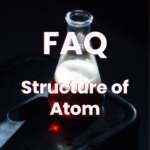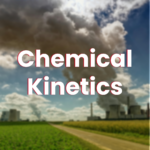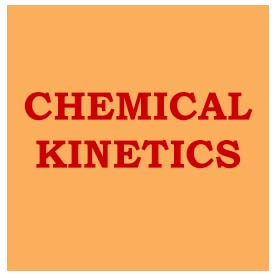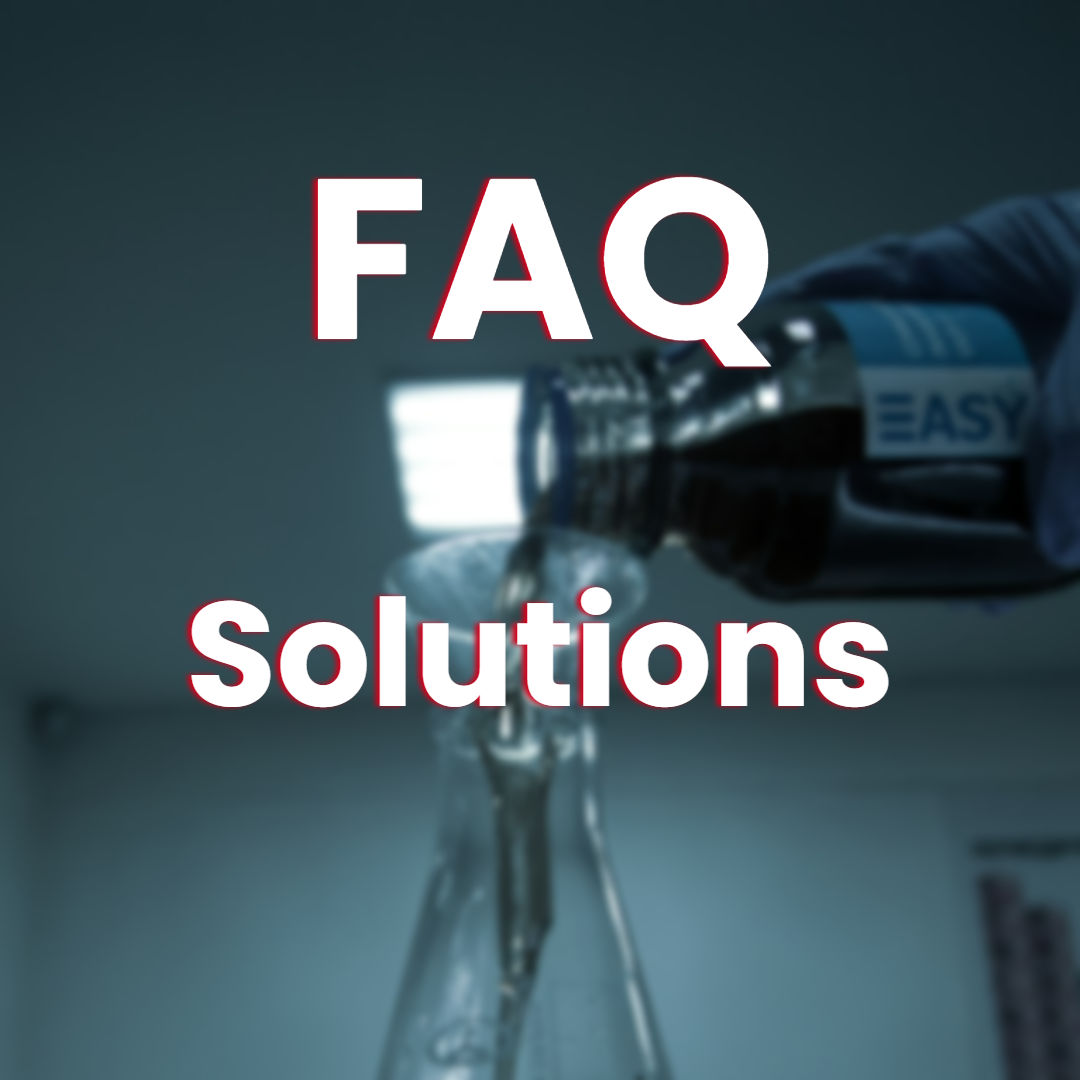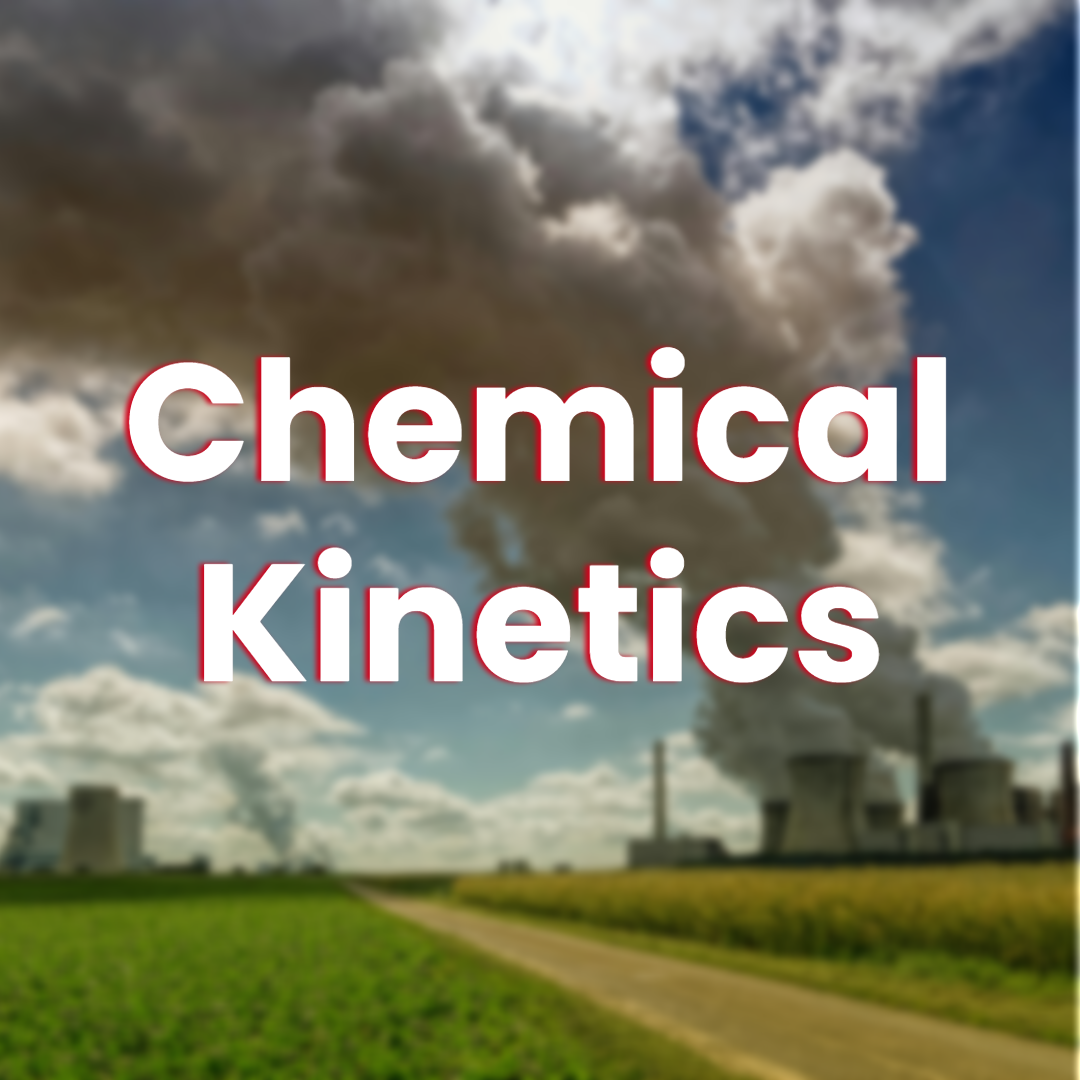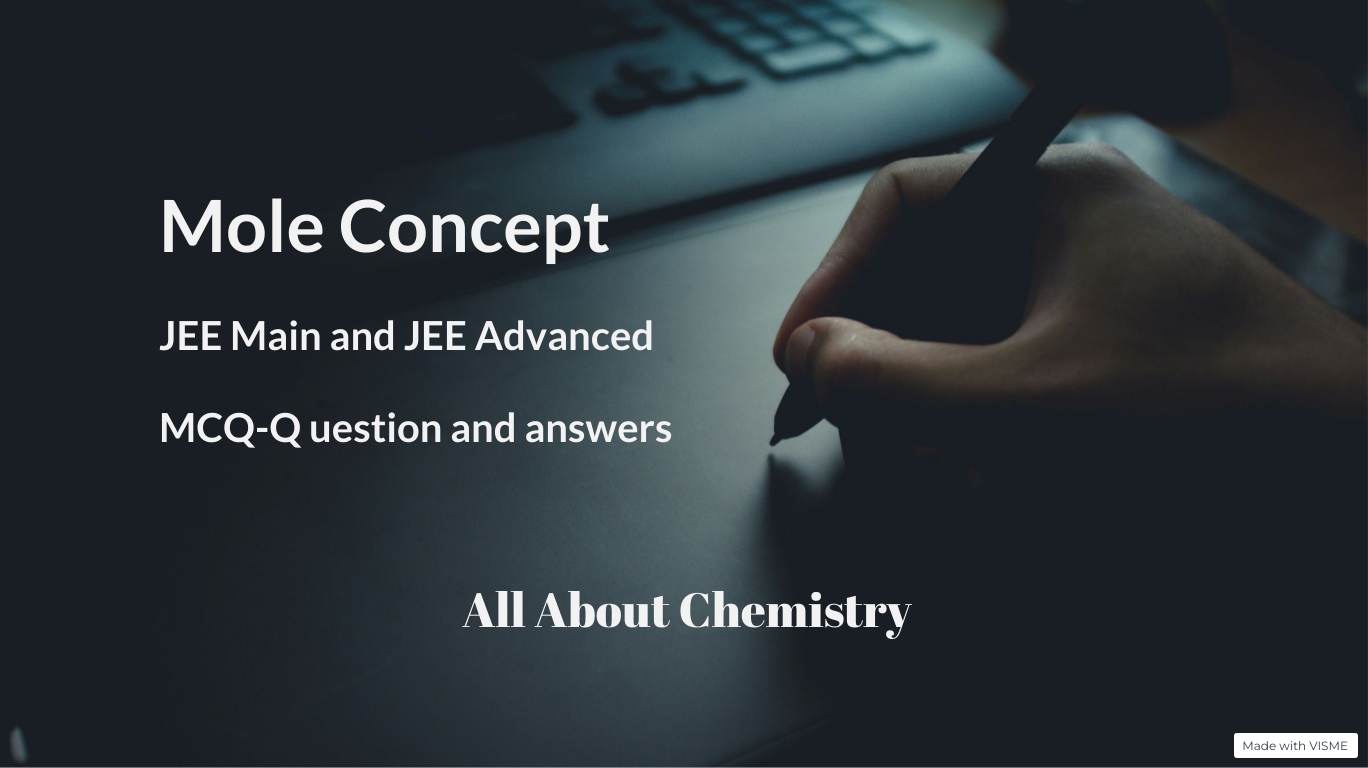Chemical Kinetics is the branch of chemistry that deals with the study of the speeds or the rates of chemical reactions. It also deals with the factors and the mechanism by which the reaction occurs. The word ‘Kinetics’ is derived from the Greek word ‘Kinesis’ which means ‘movement’. In this section, we will discuss the Rate of reactions, Factors, Order of reactions.
After completing the theory don’t forget to complete the Numerical(CLICK) and MCQ(CLICK)
Rate of Reaction:
The rate of reaction is the change in the concentration of any one of the reactants or products per unit time.
Let, A + B → C + D
Rate of reaction = -∆[A]/∆t = -∆[B]/∆t = ∆[C]/∆t = ∆[D]/∆t
Please Note: As the concentration of A and B decreases with time, a negative sign is used.
Unit of the rate of reaction= moles L-1 sec-1
Instantaneous Rate of Reaction:
The instantaneous rate of reaction is the rate of change of concentration of any one of the reactants or products at that particular instant of time.
Let, A + B → C + D
Rate of reaction = -d[A]/∆t = -d[B]/∆t = d[C]/∆t = d[D]/∆t
Law of Mass Action:
At a given temperature, the rate of a chemical reaction is directly proportional to the product of the molar concentrations of the reacting species.
Let, aA + bB → C + D
Then, Rate of Reaction: r α [A]a[B]b or r= k[A]a[B]b
Rate Law:
Let, aA + bB → C + D
Experimentally, it is observed that this reaction depend upon x concentration of A and y concentration of B.
Rate = k[A]x[B]y
Here k is known as velocity constant or rate constant or specific reaction rate and the expression Rate = k[A]x[B]y is called rate law.
The specific reaction rate or rate constant of a reaction at a given temperature may be defined as the rate of the reaction when the concentration of each of the reactants is taken as unity.
| Rate Law | Law of Mass Action |
| Experimentally determined and it is actual | It is simply based upon the stoichiometry of the equation. |
Characteristics of rate constant:
- It gives us an idea about the velocity of a reaction. Larger the value of rate constant(k) faster is the reaction.
- Each reaction has a definite value of the rate constant at a definite temperature.
- The value of K is independent of the concentration of reactants.
- The value of K depends only on temperature. For the same reactions, k has different values at different temperatures.
- The unit of k depends upon the order of the reaction.
Order of reaction
It is the same total of the exponents to which the molar concentration are raised in the rate law expression.
Let, aA + bB → C + D
Experimentally, it is observed that this reaction depend upon x concentration of A and y concentration of B.
Rate = k[A]x[B]y
Thus, the reaction is of order x with respect to A and order y with respect to y. Overall order=x+y
| Order | Reaction | Rate Law | Unit of k | Example |
| Zero | A→Products | Rate = | molL-1s-1 | 2NH3→N2+3H2 2HI→H2+I2 H2+Cl2→2HCl N2O→N2+1/2O2 |
| 1st | A→Products | Rate = | s-1 | N2O5 →2NO2 + ½ O2 NH4NO2→N2+2H2O 2H2O2→2H2O+O2 SO2Cl2→SO2+Cl2 (CH3)3CCl+H2O→(CH3)3COH +HCl C2H4+H2→C2H6 |
| 2nd | 2A→Products | Rate = | mol-1Ls-1 | NO+O3→NO2+O2 H2+I2→2HI 2NO2→2NO +O2 CH3COOC2H5+NaOH→CH3COONa+C2H5OH S2O82-+2I–→I2+2SO42- |
| 3rd | 3A→Products | Rate = | mol-2L2 s-1 | 2NO+O2→2NO2 2NO+Br2→2NOBr 2FeCl3+SnCl2→2FeCl2+SnCl4 |
| 4th | 4A→Products | Rate = | mol-3L3 s-1 | BrO3– +6H++5Br–→3Br2+3H2O |
| 2.5 | 2CO+Cl2→2COCl | |||
| 1.5 | H2+D2→2HD CHCl3+Cl2→CCl4+HCl |
Zero Order Reaction
1.Integrated rate expression of zero order reaction:
Let us consider the reaction , A→Products
Now if this reaction is of zero order then,

2.Characteristics of zero order reaction:
a) When [A] = -kt + [A]0 is compared with y=mx +c , we get, a straight line with a slope = -k

b) As the rate of zero order does not depend on the concentration, the plot of rate versus concentration will be a straight line parallel to the axis of concentration.

c) The unit of rate constant (k) = mol L-1 s-1
d) Half Life period(T1/2 )

i) A straight line would be obtained which passes through the origin and the slope = ½ k.

ii) For a zero order reaction, increase of concentration or pressure of gaseous reactant does not change the rate of reaction. Thus a linear graph is obtained.

First Order Reaction
1.Integrated rate expression of first order reaction:

2. Characteristics of first order reaction:
a)If C1 and C2 are the concentration after time t1 and t2 then,

b) Unit of the first order reaction: s-1




Factors which affect the rate of reactions:
There are various factors that affect the rate of a reaction. Some of the main factors are-
- Concentration of Reactants
- Nature of Reactants
- Temperature
- Presence of a catalyst
- Exposure to radiation
- Pressure
Concentration of Reactants:
With the increase in concentration of reactants, the number of reactant molecules increases. This increases the number of collisions and therefore the rate of reaction.

Nature of the reactants:
- Physical states of the reactants: Homogeneous reaction would lead to the maximum possibility of collision between the reactant molecules. That is why a reaction becomes faster when the reactants are mixed in the liquid phase and when their concentrations are same.
- Surface area: The surface area plays a significant role in solid reactants as the reaction occurs only at the surface. With the increase of surface area, the rate of reaction increases.
- Chemical nature of the reactants: The reactivity of an element depends on properties such as ionization potential, electron affinity, electronegativity. Elements having extremely high or low value of these properties are found to be more reactive than other elements.
Effect of temperature:
With the increase of temperature, there is an increase in collision frequency as the average K.E. of the reactions. This increases the rate of reactions. It has been generally found that the rate of a chemical reaction almost double for a 100 rise in temperature. Temperature coefficient maybe defined as ratio of rate constant of reaction which differs in temperature by 100.

For most of the reactions, it is 2<μ<3. With the increase of temperature, the average kinetic energy increases by 2-3% but the rate of reaction almost doubles as the number of molecules possessing energy equal to or greater than threshold energy almost doubles for a 100 rise in temperature.
Presence of a catalyst:
A catalyst is a substance which alters the rate of reaction without undergoing any permanent change at the end of a reaction. A catalyst usually accelerates the rate of reaction by lowering down the energy of activation via forming an intermediate with the reactants which requires lesser energy.Catalyst lowers the threshold energy level of the reaction.Thus, lesser amount of Activation energy is required to carry out the reaction.

Exposure to radiation:
Certain chemical reactions proceed only in the presence of a particular radiation. Such reactions are known as photochemical reactions or photosensitive reactions.
Pressure:
Pressure has a significant role in the case of gaseous reactants as the volume of gases undergoes significant changes with pressure and therefore there is an increase in collision frequency, thus the rate of chemical reaction generally increases with the increase of pressure.
Collision Theory
All reactant molecules by virtue of their motion possess a certain minimum amount of energy known as average kinetics energy, due to this energy; these molecules tend to collide with each other. The number of collisions taking place per unit volume per second is known as collision frequency. Out of all the collisions which occur, only few result in the formation of products and are known as effective collisions. The remaining collisions go waste and are ineffective collisions. In order to collide effectively, the reactant molecules must have,
(1) A certain minimum amount of energy known as threshold energy so that they can come so close to each other that their electron densities overlap.
(2) The reactant molecule should be property oriented in three dimensional space.

The energy of activation(EA) may be defined as the extra energy which an average reactant molecule must acquire to collide effectively. Threshold energy = Average K.E. + Energy of Activation
Arrhenius equation :
It tells about the relationship between temperature and the rate constant of a reaction.

Where, k= rate constant, A=frequency factor or pre-exponential factor, Ea=activation energy, R=gas constant (jk-1 mol-1), T=temperature (K) .The frequency factor A gives the frequency of binary collisions of the reacting molecules per second per liter. The two quantities A and Ea are collectively called Arrhenius parameters.

gives the fraction of molecules having energy equal to or greater than activation energy and it is called Boltzman factor.

Graph:

Molecularity of a reaction
It may be defined as the total number of reactant molecules which take parts in a particular step or in rate determining step of a chemical reaction.
| Order | Molecularity |
| 1. Order is the sum of exponents in the rate law equation. | 1. Molarity is the total number of molecules of reactants taking part in a particular step of reaction. |
| 2. Order of reaction may have fractional values or it may be zero | 2. There is always a whole number other than zero. |
| 3. For complex reaction, the overall rate of the reaction depends on the slowest step and the overall order is also determined by the slowest step. | 3. There is no significance of overall molecularity for a complex reaction. It is expressed for each elementary step. |
| 4. Order of reaction of determined experimentally. | 4. Molecularity is determined theoretically. |
| 5. Order of a reaction can change with change in temperature, pressure etc. | 5. Molecularity of a reaction is invariable. |
Exothermic Reaction:

Endothermic Reaction

Catalyst:
Chemical substances which can increase or decrease the speed of a reaction but itself remain intact in its mass.
Positive catalyst:
Chemical substances which can increase the speed of a reaction but itself remain intact in its mass.
| Preparation of | Reaction | Positive catalyst |
| Ammonia(NH3) [Haber’s process] | N2 + 3H2 2NH3 | Fe |
| Nitric Acid (HNO3 ) [Ostwald process] | 4NH3 + 5O2 →6H2O + 4NO | Pt |
| Sulphuric acid(H2SO4) [Contact process] | 2SO2 + O2 → 2SO3 | V2O5 |
| Ethane(C2H6) | C2H4 + H2 → C2H6 | Pt or Pd or Ni |
| Chlorobenzene(C6H5Cl) | C6H6 + Cl2 → C6H5Cl + HCl | Fe |
| Oxygen | 2KClO3 → 2KCl + 3O2 | MnO2 |
| Hydrogen (Bosch Process) | (CO + H2) + H2O → CO2 + 2H2 | Fe2O3 |
| Decomposition of hydrogen peroxide | 2H2O2 2H2O + O2 | Pt, Ag, Co, Fe, Cu, Au |
Negative catalyst:
Chemical substances which can decrease the speed of a reaction but itself remain intact in its mass.
| Reaction | Negative catalyst | |
| Decomposition of hydrogen peroxide | 2H2O2 2H2O + O2 | Glycerine, acetanilide, phosphoric acid, urea, alcohol |
| Oxidation of chloroform | CHCl3 + O2 → COCl2 | Alcohol |
Promoters:
Chemical substances that increase the efficiency of the catalyst.
- Mo or Al2O3 acts as a promoter of Fe during Haber’s Process.
- Chromic oxide acts as a promoter of Fe2O3 during the Bosch Process.
Catalyst Poison:
Chemical substances that can decrease the efficiency of the catalyst.
PbSO4+ S+ Quiniline acts as a poison during the preparation of acetaldehyde from Acetyl chloride.CH3COCl + H2 → CH3CHO + HCl
Types of catalysis
(1) Homogeneous catalysis :
When reactants and catalysts are in the same phase and the reaction system is homogenous throughout the reaction.Ex: Hydrolysis of ester in the presence of a mineral acid.
(2) Homogeneous catalysis :
When the reactants and catalysis are in different phases, the catalysis is known as heterogeneous catalysis. Ex: Oxidation of NH3 by oxygen in the presence of pt. (Ostwald process)
Auto catalysis :
In certain reaction, one of the product formed in the reaction catalyses the reaction. Such a catalysis is known as auto catalysis. In auto catalysis, the reaction is slow in initial stage but increases considerably after some time. For example
5H2C2O4 + 2KMnO4 + 3H2SO4→2MnSO4 + K2SO4 + 10CO2 + 8H2O. The Mn2+ ions from MnSO4 formed in the reaction catalyse the reaction.
Induced catalysis :
When a chemical reaction influences the rate of some other reaction which does not occur under ordinary conditions the phenomenon in known as induced catalysis.
(1) Sodium arsenite sodium is not oxidized by air. However if air is passed through a mixture of sodium arsenite and sodium sulphite, both of them undergo simultaneous oxidation. Oxidation of sodium arsenite is catalysed by oxidation of sodium sulphite.
(2) Reduction of mercuric chloride with oxalic acid is very slow. However KMnO4 is reduced by oxalic acid rapidly. When a mixture of mercuric chloride and oxalic acid is treated with KMnO4 both get reduced simultaneously. Reduction of KMnO4 induces reduction of mercuric chloride.
Characterictics of a catalyst
- A catalyst remains unchanged in mass and composition at the end of the reaction.
- A small quantity of catalyst is usually sufficient to catalyze the reaction.
- A catalyst is specific in action.
- A catalyst does not initiate a reaction.
- A catalyst does not alter the position of equilibrium.
Effect of temperature on catalytic activity :
In general, the rate of the catalytic reaction is altered by a change in temperature in the same way as exhibited by the uncatalysed reaction. However, the increase in catalytic power of a catalyst with the increase in temperature is not uniform. This is due to the fact that some of the catalysts are physically altered by temperature. It has been found that the catalytic activity of a catalyst is maximum at a particular temperature. This temperature is known as the optimum temperature of the catalyst.
Theory of catalysis
1. Intermediate compound formation theory :
This theory is applicable to explain the phenomenon of homogenous catalysis. According to this theory, one of the reactants combines with the catalyst to form the intermediiate which again combines with the another reacyant to form the product and regenerates the catalyst.
2. Adsorption theory (contact catalysis) :
This theory explains heterogenous catalysis

According to this theory : (i) The surface of the catalyst has a large number of unsatisfied free valencies or active centres which can undergo loose chemical combination with the reactant molecules. the number of active centres can be increased if the catalyst is taken in powdered form or in broken form theory increasing the surface ares. It can also be increased if the catalyst has large number of peacks, edges, cracks etc.
(ii) The reactant molecules adsorb at the surface of the catalyst with the help of the formation of weak van der wasls forces of attraction.
(iii) As adsorption is the exothermic phenomienon, the liberation of heat breaks the reactant and the activation energy is also decreased and the reactant atom combines with the adjacent molecules of another reactant to form activated complex which readily combines with the another atom to form the product.
(iv) When the product is formed, the product molecules leave the surface of the catalyst making them ready for further reaction.
Enzyme catalysis :
Enzymes are the proteins which alter the rate of biological reactions.
Charactericties features :
- They are highly specific in action.
- They are active at a particular temperature called optimum temperature.
- The catalytic activity enzymes are destroyed by adding electrolytes or by exposing them to UV. radiation or catalytic poison.
- Enzymes work at a particular pH value.


